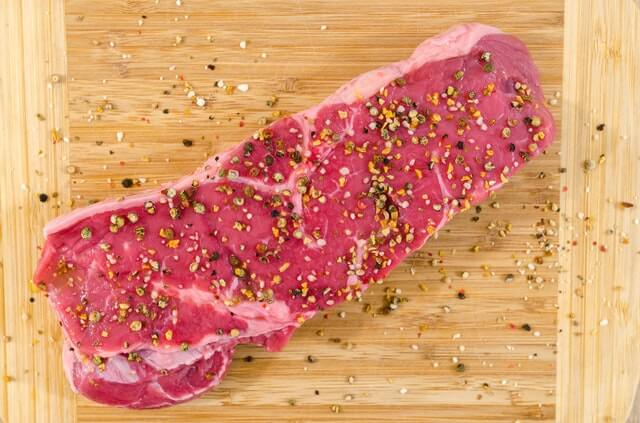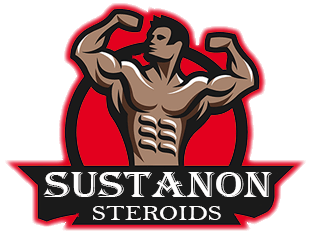Sustanon Results
During this section we are going to share some tips for optimising your sustanon gains and guaranteeing that you get the best results possible whilst on cycle. None of them are particularly mind blowing - they just make good common sense. With this said, you’d be surprised how many people overlook the basics when taking steroids.
As a result, they never fulfil their potential. We’re going to make sure that doesn’t happen with you though.
Nutrition
Your nutritional practices need to be the same regardless of the anabolic substance you choose to use – we say the same, but what we mean by the “same” is excellent.
Whether using steroids for cutting or bulking purposes, you shouldn’t even think about hitting the gym until you know precisely how much you should be eating on a daily basis in order to achieve your goals.
In order to figure this out, you need to head to freedieting.com and use their daily total calories calculator.
Answer all of the questions honestly on there, and select the calorie total that is relevant to your goal (weight loss, muscle gain, etc.)
From there, head onto the nutrient ratio calculator and select either the “moderate” setting for weight gain purposes, or the “low carb” setting for fat loss purposes.
Ensure that your meals consist of green and leafy vegetables, lean protein sources, low GI carbohydrate sources and healthy fats (omega 3 and 6.)
Nutrition is going to account for 80% of your results when using steroids and training in general. It is almost the entire difference between sustaining and generating quality muscle whilst bulking, and sustaining / maximising the visibility of muscle mass whilst cutting.
Many people make the unfair assumption that anabolic products can achieve the above end results on their own, but this simply isn’t the case. Steroids cannot work to an optimum or even moderate standard without a sufficient nutritional intake.

Training
Your training practices whilst using sustanon need to revolve primarily around muscle gain, therefore you must adhere to a specific series of training guidelines during your time with it.
Some basic (non-cycle specific) training guidelines that absolutely must be adhered to are:
- Take the time to slowly control each repetition, and “squeeze” at the bottom of the movement to fully incorporate every fiber of the target muscle
- Ensure that you always adhere to your specified rest periods
- Ensure that you always adhere to your specified rep range
- Never advance your weight loads until you have truly “mastered” your current weight range for the maximum rep range relevant to your cycle with excellent form
- Perform each movement for a set count of between 3 – 4
- Perform each exercise for between 6 – 8 reps
- Integrate one “heavy” week every three weeks (whereas exercises are performed for between 3 – 5 repetitions, as this will help to advance growth as a result of maximum load capacity increasing)
- Take between 90 – 120 seconds rest in between sets
- Try to ensure that your sessions never last for longer than one hour
- Ensure that your sessions consist of primarily (80%) compound exercises with some isolation (20%) added to the mix in order to maintain shape
The above series of guidelines will provide the perfect foundation for developing and sustaining excellent skeletal muscle of a dense and “thick” nature.
This is exactly the kind of muscle you need to focus on developing during an off-season.
Keeping Your Gains Post Cycle
As previously stated, keeping your gains post cycle doesn’t involve some “magical” combination of elements, it simply involves adhering to sensible guidelines.
First and foremost, your PCT cycle must be well structured (as previously recommended) and implemented successfully. Should this not take place, testosterone levels will drop significantly and maintaining mass will be tremendously difficult, if not impossible.
In conjunction with this, training practices must continue to be excellent – you’ve got to train as hard when you come “off” as you do whilst you are on. This is an easy mistake to make, and it has cost many a trainee their hard earned muscle.
Last but not least (and of the most crucial importance) is your nutritional practices. It’s important that you get an accurate body fat percentage reading at the end of your cycle so that you can determine the precise (to the pound) quantity of lean muscle mass you are carrying (without the fat and water.) Once you have this figure, use freedieting.com again and work your “numbers” so that you are eating for muscle maintenance purposes.
When answering the questions on the freedieting website, the calculations should by default provide you with the equivalent of this figure when you observe the “maintenance” figure – it’s always best to double check though.
Your food still needs to be structured in the same manner as previously mentioned (in regards to lean protein sources, etc.)
Sustanon Training
By the time you start enhancing your physique with Sustanon, you absolutely must have good training and nutrition principles already down to a T. This includes a certain level of strength and fitness. As a bare minimum, you should at least be bench pressing and squatting your body weight, and deadlifting at least 1.5 times your body weight.
Ideally though, you’ve have wanted to reach, or be close to, your maximum genetic potential. By building as much muscle as possible prior to beginning steroid use, you will have more androgen receptors and a larger base to build upon. This gives you a better chance of reaching an overall larger size during a cycle.
There is really no need to alter your training routine too much when using steroids. Some users to increase the volume of low or medium volume routines by adding additional exercises or sets. However an overhaul of your training program is not necessary.
One common training program used is ‘The Body Part Split’. This allows a bodybuilder to train each muscle group throughout one week in 5 or 6 training sessions, For example:
Monday: Chest
Barbell Incline Bench Press Medium Grip (4×8-10)
Dumbbell Bench Press (4×8-10)
Dumbbell Flyes (4×8-10)
Butterfly (3×12-15)
Bent Arm Dumbbell Pullover (3×12-15)
Tuesday: Back
Weighted Pullups (5x3x2, 5x2x2, 5×1)
Bent Over Barbell Row (4×8-10)
Straight Arm Pulldown (4×8-10)
Barbell Shrug (3×12-15)
V Bar Pulldown (3×12-15)
Wednesday: Shoulders
Push Press (5x3x2, 5x2x2, 5×1)
Upright Barbell Row (4×8-10)
One-Arm Incline Lat Raise (4×8-10)
Front Dumbbell Raise (3×12-15)
Bent Over Low-Pulley Side Raise (3×12-15)
Thursday: Legs
Barbell Squat (5x3x2, 5x2x2, 5×1)
Leg Press (4×8-10)
Seated Leg Curl (4×8-10)
Leg Extension (4×12-15)
Standing Calf Raises (4×12-15)
Friday: Arms/Abs
Preacher Curl (5x3x2, 5x2x2, 5×1)
Decline EZ Bar Triceps Extension (4×8-10)
Hammer Curls (4×8-10)
Dips (3×12-15)
Barbell Curl (3×12-15)
Crunch (5×5)
Flat Bench Lying Leg Raise (3×10-12)
Cable Crunch (3×10-12)
Plank (3 sets to failure)
This type of program is one that needs to be approached with a certain amount of experience. It would prove too taxing for a gym newbie. If you choose to train a 5 day split, it is essential to deload regularly to avoid injury.
The Basic Nutrients
A nutrients is something that provides nourishment. Nutrients can be broken down into 3 basic forms, known as macronutrients. These are as follows:
Proteins
The body is largely made up of protein (and water). Protein builds, repairs and maintains muscle tissue. Protein is made up of smaller basic units called amino acids. Approximately 20 different amino acids have been identified, however 9 amino acids are referred to as ‘essential amino acids’. These are unable to be manufactured by the body and must be provided as a part of a balanced diet.
To optimize the benefits of protein, we must maintain a ‘positive nitrogen balance’. This term refers to a specific state where enough protein is available for both the bodies regularly functions to be carried out and muscle building.

The role of nitrogen can be simply explained. When a positive nitrogen balance occurs, the body is in an anabolic (muscle building) state. When a negative nitrogen balance occurs, the body is in a catabolic (breaking down tissue) state.
Therefore, if you are not ingesting an adequate amount of protein daily, your body will go into a catabolic state and start breaking down muscle tissue to meet its daily protein needs.
The common recommendation for muscle growth is to take in 1-1.5 grams of protein per lb. of body weight. However to also ensure your body remains in an anabolic state from a positive nitrogen balance, you also need to be taking in an adequate amount of both carbs and fat. If you are struggling to meet your protein requirements through daily food intake, supplement with whey protein shakes is an acceptable option.

Carbohydrates
Carbohydrates have a bad rap for being responsible for fat gain but the simple fact is that carbs are the body’s preferred fuel and energy source. A common complaint from people on low carb diets is their noticeable lack of energy. It is true however, that if you consume too many carbs throughout the day, you will gain weight. The simple safeguard against this is to calculate your daily requirements.
For mass gain, we recommend around 2-3 grams per lb. of body weight.
The best sources of carbohydrates for athletes who are working at gaining muscle or strength are from foods such as sweet potatoes, rice, pasta, bananas and broccoli. A common sign that your carbohydrate intake is too low is that you experience excessive fatigue after training coupled with low motivation. Don’t be afraid to adjust individual macro levels until you find what works best for you.
Fats
It may surprise some people that fat is actually an essential nutrient for our optimal health and wellbeing. Not only is it used as an energy source, it is responsible for cellular construction and the regulation of most of our bodies processes.
Fat can be broken down into building blocks called fatty acids which fall into three main categories:
All of these fats are required in balance for optimal health. We recommend to get roughly 1/3 of your daily fat intake from each type of fat.



Calculating macronutrient intake
To gain the maximum amount of muscle with the minimum amount of fat, a suggested starting point is 40% carbohydrates, 30% protein and 30% fat.
This is your daily target, however you have the freedom to not follow this with every single meal. The reason for this is because your energy needs will change throughout the day, along with your body’s ability to process and utilize different types of fuel.
By considering nutrient timing, we are able to give our body exactly what it needs at the correct time of day, which in turn enhances body composition changes.
Why Timing is So Important
Let’s use the example of an athlete who trains in the morning. Immediately following training, their body can resemble a sponge, ready to rapidly absorb carbohydrates to kick start the muscle repair and rebuilding process.
The optimal meal to have in this instance is one that is high in carbohydrates and low in fat. This will ensure your body is supplied with energy rapidly, with lower fat assisting digestion.
However at dinner-time, this athlete would have a very different dietary need. Because our athlete hasn’t trained in several hours, their glycogen stores have already refilled. Their body doesn’t require a quick acting energy source at this moment.
Instead, our athlete would need to ingest a meal that is higher in protein to ensure the continuation of protein synthesis and, in turn, muscle building, especially during sleep. It should also be high in fat and low in carbs.
As you can see, tracking macronutrients allows you the freedom to exploit your body’s dietary requirements and take advantage of its natural changes in organic chemistry, enabling an athlete to grow muscle without unwanted fat gain.
One final subject to touch on is the flexibility that tracking macronutrients offers.
Some people choose to adjust their diet in various ways when using Testosterone such as consuming the total daily carbohydrate allocation immediately following a workout. Others may choose to split their total carb intake in half and consume one portion early in the day and the second portion immediately following their workout.
What’s important is that you try different methods and note how your body reacts. As every body is different, you will benefit the most by discovering the method that works best for you.
